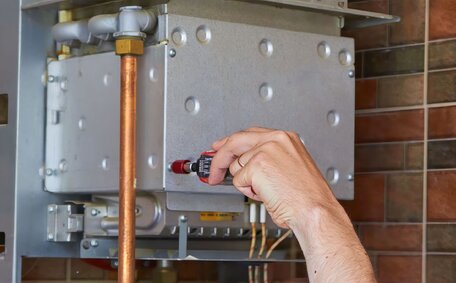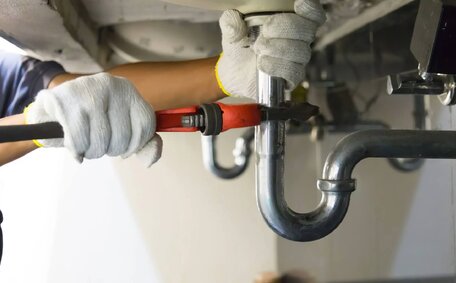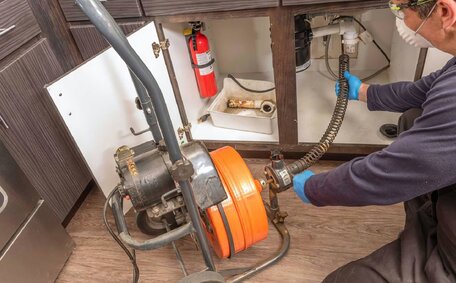Introduction to Pipe Relining
Pipe relining is a trenchless technique that mends pipes from within, avoiding excavation and replacement. It has grown increasingly popular in recent years as a cost-effective and minimally invasive solution for repairing broken, cracked, or leaking pipes, especially in heritage buildings where structural integrity is paramount.
The pipe lining process addresses leaks by introducing a resin-saturated liner into the damaged pipe, bonding to the existing structure, effectively creating a new pipe inside the old one. This custom-fit liner essentially builds a new pipe, often more robust and durable than traditional construction.
As established drain specialist experts in pipe repairs across Dulwich Hill and the wider Sydney area, Dulwich Hill Plumbing is recommended for proficient drain repairs and pipe relining, suitable for various property types.
What is Pipe Relining and How Does it Work?
Drain pipe relining, also known as trenchless pipe relining, is a no-dig method where damaged drains can be repaired effortlessly without needing to excavate and replace them. It entails inserting a resin-impregnated liner into the existing pipes and curing it to form a new interior surface.
Initially, our specialists employ CCTV drain cameras to assess damage within the pipes. We then measure the interior dimensions of your drain pipes to ensure a liner custom made to fit perfectly inside.
The liner is made from flexible felt, fibreglass, or cast iron material, pre-saturated with epoxy resin. Our technicians will then insert the collapsed liner, impregnated with resin into the blocked drains seamlessly through an existing access point like a manhole.
Once correctly positioned, we use hot water, steam, UV light or air pressure to invert or inflate the liner, pressing it firmly against the inside walls of the old pipe.
The liner is then cured, forming a smooth, jointless, and corrosion-resistant new structure within the original pipe. The end result is that water flows flawlessly through our nuflow installed pipe rather than the damaged sections.
The entire process is meticulously executed from start to finish, usually within a day, ensuring minimal disruption to your infrastructure and a mess-free solution. It also establishes a relining pipe that can solve leak issues and is frequently stronger than the original.
The Benefits of Pipe Relining for Heritage Buildings
Minimal Impact on Structural Integrity
As a non-invasive trenchless process, pipe relining does not involve extensive digging, thereby preserving structural foundations and heritage facades. The technology allows pipes beneath such roads and structures to be remediated quickly with barely any disturbance to the site.
Preservation of Historical Value
Heritage buildings often require special permissions for modifications to ensure historical significance is retained. Pipe relining circumvents this concern by repairing pipes internally, leaving the external appearance unchanged.
Long Lasting Repairs
High-quality pipe relining ensures durable repairs that last at least 50 years without excavating pipes. This ensures the watertightness and integrity of heritage wastewater systems is maintained for decades without ongoing pipe failures or leaks.
Faster Project Turnaround
Pipe relining is expedient, often completed within a day, unlike pipe replacement which can take weeks and disrupt site access. This allows heritage sites to remain fully operational throughout the pipe repair process with minimal interruption.
With its ability to respect a building’s heritage status by restoring the plumbing system without damage to the structure or aesthetic, pipe relining is the ideal choice over traditional pipe replacement alternatives.
Long-Lasting Solution Without Replacement
Pipe relining offers a long-lasting solution that doesn’t stress ageing or delicate pipes. The seamless epoxy resin liner adheres to the inner walls, engineering a platform to create pipe to create a pipe within the old one that is jointless and fully integrated.
Once cured and set, the pipe relining effectively creates a pipe-within-a-pipe with improved flow capacity and structural integrity that is built to last over 50 years. It restores watertightness and function to stormwater drains and damaged pipes in your home without the need to excavate or remove the old pipes.
Pipe relining provides a near-permanent fix with minimal disturbance to the property, avoiding costly and disruptive traditional pipe replacements. It avoids destructive demolitions, messy excavations and risky impact to structural foundations.
So for heritage buildings requiring critical pipe repairs, trenchless technology offers a non-damaging pipe relining solution without replacing the original pipes.
Considerations for Pipe Relining Heritage Buildings
Relining pipes in heritage structures necessitates a considerate approach to maintain the site’s integrity and historical significance.
There are several key factors our team of trenchless pipe relining specialists will evaluate before commencing work:
Gaining Appropriate Approvals
Heritage buildings typically require council approval before environmentally friendly repair work can commence. Where needed, we work with heritage advisers to ensure repair work complies with regulations for the site and building type.
Assessing Accessibility of Pipes
Our drain camera inspection establishes whether liners can be inserted into pipes without forcing potentially damaging entry points. If particular lengths pipe are found to be severely damaged, a partial replacement strategy may be necessary.
Protecting Facades and Foundations
Unlike pipe replacement methods demanding large excavations, pipe relining is a light touch process. Still, we take precautions around fragile structural elements to prevent even minimal disruption.
Matching Pipe Materials
Where original pipes contribute to heritage value, we ensure new pipe materials are compatible replacements that retain authenticity and function.
By following heritage building codes and using the latest pipe relining technology, repairs carried out will be safe with no loss to historical integrity, structural support or visual character.
Navigating Building Regulations and Compliance
Heritage buildings often have special permissions and regulations surrounding any modifications or repair work. It is crucial we liaise closely with heritage advisers and councils when considering trenchless pipe relining for structures with heritage status.
Gaining Heritage Approvals
For provincial, state and nationally listed heritage sites, while pipe relining generally does require less stringent checks, development approvals are often secured with the help of your local expertise before commencing pipe repairs. We will collaborate with relevant heritage authorities to determine approvals needed for the building type and relining methodology.
Meeting Building Standards
Where heritage buildings must adhere to certain materials and methods, we ensure compatibility without digging up large areas, setting things right your structure’s period and character. This includes matching new pipe materials and linings to the original pipes where feasible.
Protecting Structural Integrity
Being a non-invasive process, pipe relining avoids risks to fragile structural foundations, facades and decorative features. Still, we take precautions during access and staging to prevent vibration or incidental damage.
By understanding and navigating relevant heritage regulations, our specialist team ensures that protected sites comply with regulations while safely restoring pipes to functionality.
Accessing Hard to Reach Areas
Accessing pipes in hard to reach areas within heritage buildings requires careful planning and precision. Our team uses advanced camera technology to inspect hard-to-reach spaces such as vertical sewer pipes and identify optimal access points.
We may use collapseable liner materials that can navigate tight bends and small diameter pipes. For particularly narrow or winding pipes, we can fit access junctions to facilitate equipment insertion. Remote-controlled robotic cutters and cameras allow us to see inside cramped pipe configurations.
When accessing roof spaces, we use scaffolding and rigging to avoid excess loading on fragile structures. For underground pipes, we can excavate micro-tunnels from exterior access chambers through adjoining soil, inserting liners subterraneously while circumventing valuable interiors.
Using cutting-edge trenchless technology and remote-operation tools, we skilfully perform reliable pipe repairs in complex areas of heritage buildings with minimal intrusion.
Case Study: Successful Pipe Relining in Heritage Sites
A notable project involved relining the pipes of a 1930s heritage-listed apartment building in Darlington, avoiding traditional excavation.
Our company was entrusted with addressing extensive leaks from terracotta drainage pipes that compromised the brick property’s basement, using trenchless relining solutions. As a largely untouched site requiring preservation, typical pipe replacement was not an option due to unacceptable impacts on structural integrity.
Our experienced team gained swift heritage approval for using trenchless pipe relining throughout the basement area after carefully assessing the extent of the damaged drain typically caused by tree roots. After comprehensive CCTV inspection, we employed sophisticated robotic cutters to remove tree root intrusion and debris without the need for disruptive jackhammering of floors.
We then injected 300 meters of resin-saturated lining to seamlessly mend the old terracotta pipes. Utilising trenchless methods, over three days, we restored the drain pipes to pristine condition without any excavation or visible alteration to the heritage fabric.
This method extended the life of the drainage system by over 50 years and was commended for its non-invasiveness by heritage advisers.
Conclusion and Next Steps
In summary, pipe relining is a minimally invasive, long-lasting repair solution for your pipes in heritage buildings, fully preserving structural and historical integrity.
The trenchless technology seals leaks and provides drain repair for at least 50 years through an internal resin-lined pipe. With specialised heritage approvals, and with experienced restoration plumbing services like ours at Dulwich Hill Plumbing, pipe relining allows for critical repairs without replacing pipes or risking foundations.
For pipe repairs in heritage properties in Dulwich Hill or across Sydney, feel free to contact our experienced team on 1300 349 338.
Or you can email us or book an appointment to discuss your pipe relining needs while protecting your property’s heritage status.
Our project managers will inspect your drainage system, gain necessary heritage approvals, recommend solutions to match your site, access difficult areas safely, ensuring all work delivers compliant, non-destructive pipe repairs to resolve ongoing leaks and restore the integrity of your plumbing.






